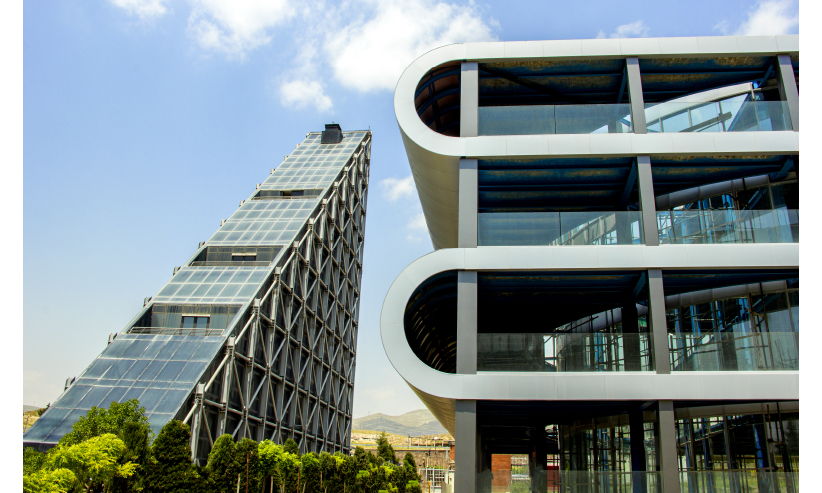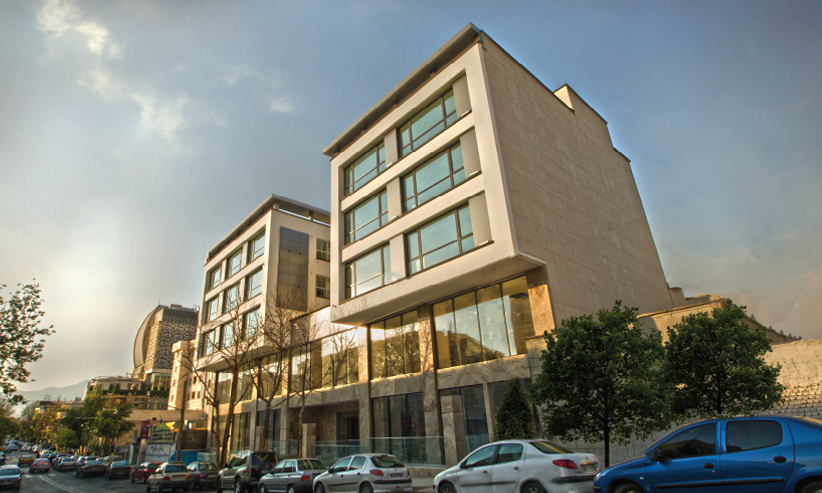Space Frame and free form structures: every thing you need to know
what is space frame?
In structural architecture and engineering, a space frame (3D truss) is a strong, lightweight truss-like structure made of interconnected foundations in a geometric pattern. Spatial structures are suitable for large areas that do not have a suitable support. In recent years, appropriate research and development has been done to make space structures applicable for industrial and organizational applications in world wide such as Iran and middle east. For example, the extraordinary beauty of space frames has led to their widespread use in all international air terminals (source).
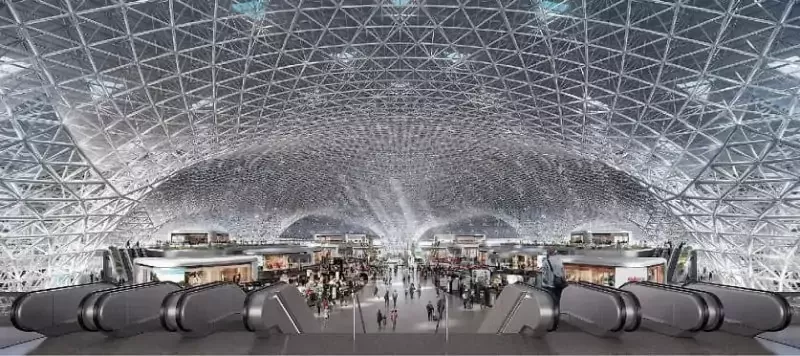
History of space frames
From 1898 to 1908, Alexander Graham Bell created these structures based on quadrilateral geometry. Bell was primarily interested in using them to build sturdy frameworks for marine and aviation engineering. Dr. Mengeringhausen then developed the space network system called MERO (MEngeringhausen ROhrbauweise) in 1943 in Germany. Thus began the use of space trusses in architecture. TStéphane de Chateau also invented the three-dimensional SDC system in France (1957), the Unibat system (1959) and the Pyramitec system (1960). Finally, in 1961, Buckminster Fuller patented the octagonal truss.
Spatial frame system components
- Axial members, known as tubes, are the main components of this type of structure.
- These pipes can have circular hollow sections or rectangular hollow sections that are connected to each other using fittings.
- Types of joints – The type of joints used in this type of structure depends on the type of pipes as well as the overall design and required strength of the structure.
advantages of space frames
- Spacecraft components are easy to transport and store
- These cambering features are customizable
- Easy on-site installation due to prefabricated parts
- No need for Perlin
- It is more suitable for structures that have irregular shapes and places of the plan
- Also suitable for structures with wide openings
- Provides us with a columnless structure
- It has a high anti-earthquake capability
- It has a great ratio of opening to depth
- Low shipping cost
- It is light and structurally strong
- Concentrated loads are evenly distributed throughout the structure
- It has excellent acoustic properties.
disadvantages of space frames
- Spatial frames, which include a three-dimensional plane structure, are based on the rigidity of a triangle and are composed of linear elements that are usually subjected only to axial tension or compression.
- The type and number of joints are not suitable to prevent bending or twisting
Application of space frames
The most important applications of space frames are:
- These structures are a common option in current construction, often found in large commercial and industrial buildings with modern roofs and minimal support.
- They are commonly used to build aircraft hangars, factories, movie theaters, exhibition halls and airports.
- The combination of space frame with Skylight offers a unique architecture.
types of space frames
Space structures are classified in different ways.
Based on curvature:
- Flat covers
- Barrel Vaults
- Spherical Domes
- Freeform structure
Based on the number of layers:
- single layer
- double layers
- triple layers
Flat Covers
As the name implies, this type of space structure has a flat surface with no curvature and no smooth surface.
Barrel Vaults
- As its name suggests, the Barrel Vaults space structure has a simple arc section.
Spherical Domes
- Dome structures (spherical domes) are made of a complex network of steel sections
- spherical domes are composed of different types, the most important of which are:
- Geodesic Dome
- Schwedler Dome
- Kiewitt Dome
Geodesic Dome
A geodesic dome is a hemispherical structure with a thin shell (lattice-shell) that is based on a geodetic polygon (a type of convex polygon composed of triangular faces). The triangular elements of the dome are structurally rigid and distribute the structural stress throughout the structure, making the geodetic domes able to withstand very heavy loads relative to their size. For the first time in the twentieth century, this structure was designed by the American engineer and architect R. Buckminster Fuller was invented.
A geodetic dome may be supported by light walls, but unlike other large domes it can be placed directly on the ground as a complete structure. A large geodetic dome was used in the United States at Expo 67 Montreal in 1967. Among the design applications of this type of dome, we can mention sports fields, theaters, greenhouses and exhibition halls.

Geodesic Dome
Schwedler Dome
A Schwedler dome consists of meridians attached to a number of horizontal polygonal rings to be able to rigid the resulting structure and withstand asymmetric loads. Each trapezoid formed by the intersection of the meridians with the horizontal rings is divided into two triangles by a diagonal member. Sometimes the trapezoid may also be split by two intersecting members. This type of dome was designed by the German engineer J.W. Schwedler in 1863. The great popularity of Schwedler dome is due to the fact that the structure can be analyzed statically. In practice, in addition to the axial forces, all members are also affected by bending and torsional moments.
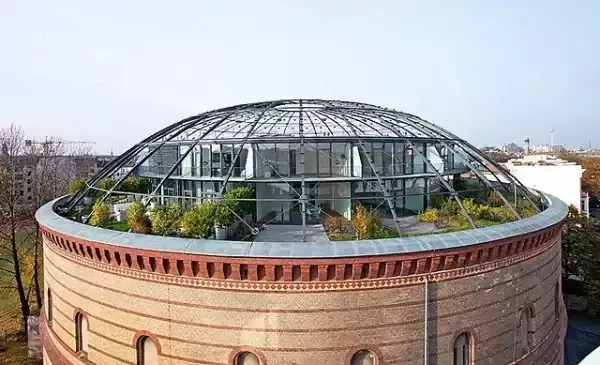
Schwedler Dome
Kiewitt Dome
The pattern of the Kiewitt dome consists of a series of triangles divided along the circumferential direction that have a common vertex at the crown of the dome. The following schematic figure shows the pattern of these three types of dome-shaped space frames.

Kiewitt Dome
Folding Domes
A folding frame is a structure that consists of one or more “folding” forms. Folding structures can have larger openings, less strength and less net weight than other conventional structures. The strength and stiffness of a folding structure depends on the configuration, thickness and dimensions of its constituent elements. Folding structures are different in terms of material, geometric form and functional.
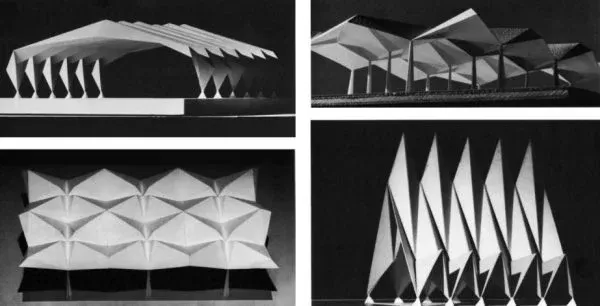
Folding Domes
Single Layer space frame
- It consists of a single layer
- There are different types of single-layer structures:
- Bilateral network
- Diagonal grid
- Three-way network
- Four-way network
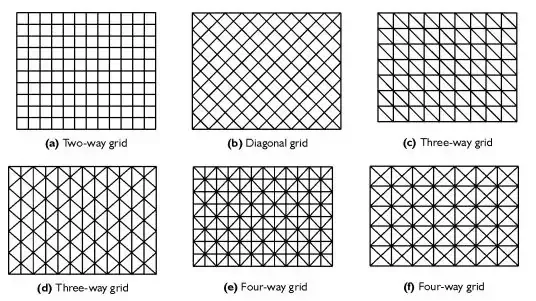
Double Layer space frame
- The structural components are in two layers parallel to each other and at a fixed distance
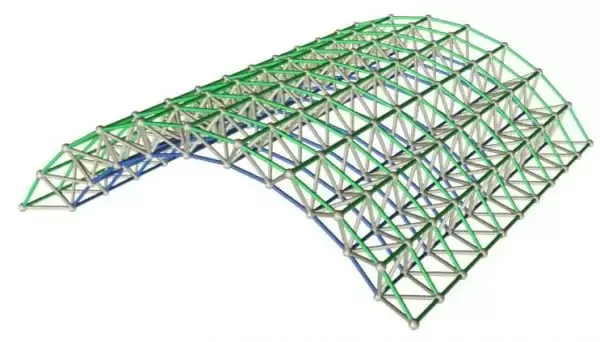
Triple Layer space frame
- It is located in three parallel lines that are connected diagonally.
- They are mostly used for large openings.
Free form structure
what is freeform strutures?
Freeform structures, unlike conventional surfaces such as plates, cylinders, and conical surfaces, do not have specific radial dimensions. They are used to describe forms such as turbine blades, car hulls and boat hulls. Originally developed for the automotive and aerospace industries, free-form surfaces are now widely used in all areas of engineering design, from consumer goods to ships, as well as in architecture. Most systems today use Non-Uniform rational B-Spline mathematics (NURBS) to describe surface forms. However, there are other methods such as Gordon levels or Coons levels.
In architecture, free form structures can be used to cover a large area in different places. Areas, vestibules, museums, places of worship, and industrial buildings all require large covered areas without intermediate columns. For the effective realization of these large structures, design specialists must shape these buildings so that the form can be used both as a structural element and for architectural expression.
The image below is from the Middle East Plant Research Center, designed by Alusys. The design style of this work is free form structure.

freeform structure
Historical Context of free form strutures
in ancient Rome, the Pantheon showcased the potential of non-reinforced cast concrete with its massive semi-sphere dome. However, due to concrete’s brittleness, it required significant labor and investment. The industrial revolution introduced steel reinforcement, allowing concrete to take on more organic and irregular forms while maintaining structural stability.
types of freeform structures
Freeform structures or surfaces can be categorized based on their shape. Here are the three main types:
High Curvature
Freeform structures or surfaces can be categorized based on their shape. Here are the three main types:
Medium Curvature
These structures exhibit moderate curvature and are often used in architectural designs that require some spatial freedom but not extreme complexity.
low Curvature
These structures have minimal curvature and are simpler in shape. They are commonly seen in conventional architectural designs and engineering applications.
advantages of free form structures
Freeform structures offer several advantages in architecture and design:
- Aesthetics: Freeform designs allow for unique, visually striking buildings and surfaces. Their organic shapes can create a sense of beauty and harmony.
- Customization: Architects and designers can tailor freeform structures to specific project requirements. This flexibility enables creativity and innovation.
- Spatial Efficiency: Freeform designs optimize space utilization. Irregular shapes can fit into challenging sites or maximize available space.
- Structural Efficiency: Curved surfaces distribute loads more evenly, reducing stress concentrations. This can enhance structural stability.
- Energy Efficiency: Organic forms can improve natural lighting and ventilation, reducing energy consumption.
- Iconic Landmarks: Many iconic buildings, like the Guggenheim Museum in Bilbao, Spain, feature freeform designs that become landmarks.

